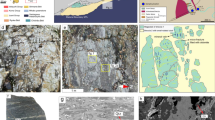Abstract
—In order to study both the interplate seismic loading cycle and the distribution of intraplate deformation of the Andes, a 215 site GPS network covering Chile and the western part of Argentina was selected, monumented and observed in 1993 and 1994. A dense part of the network in northern Chile and northwest Argentina, comprising some 70 sites, was re-observed after two years in October/November, 1995. The M w = 8.0 Antofagasta (North Chile) earthquake of 30th July, 1995 took place between the two observations. The city of Antofagasta shifted 80 cm westwards by this event and the displacement still reached 10 cm at locations 300 km from the trench. Three different deformation processes have been considered for modeling the measured displacements (1) interseismic accumulation of elastic strain due to subduction coupling, (2) coseismic strain release during the Antofagasta earthquake and (3) crustal shortening in the Sub-Andes.¶Eastward displacement of the sites to the north and to the south of the area affected by the earthquake is due to the interseismic accumulation of elastic deformation. Assuming a uniform slip model of interseismic coupling, the observed displacements at the coast require a fully locked subduction interface and a depth of seismic coupling of 50 km. The geodetically derived fault plane parameters of the Antofagasta earthquake are consistent with results derived from wave-form modeling of seismolog ical data. The coseismic slip predicted by the variable slip model reaches values of 3.2 m in the dip-slip and 1.4 m in the strike-slip directions. The derived rake is 66°. Our geodetic results suggest that the oblique Nazca–South American plate convergence is accommodated by oblique earthquake slip with no slip partitioning. The observed displacements in the back-arc indicate a present-day crustal shortening rate of 3–4 mm/year which is significantly slower than the average of 10 mm/year experienced during the evolution of the Andean plateau.
Similar content being viewed by others
Author information
Authors and Affiliations
Additional information
Received May 21, 1998, revised January 19, 1999, accepted January 20, 1999.
Rights and permissions
About this article
Cite this article
Klotz, J., Angermann, D., Michel, G. et al. GPS-derived Deformation of the Central Andes Including the 1995 Antofagasta Mw = 8.0 Earthquake. Pure appl. geophys. 154, 709–730 (1999). https://doi.org/10.1007/s000240050249
Issue Date:
DOI: https://doi.org/10.1007/s000240050249




